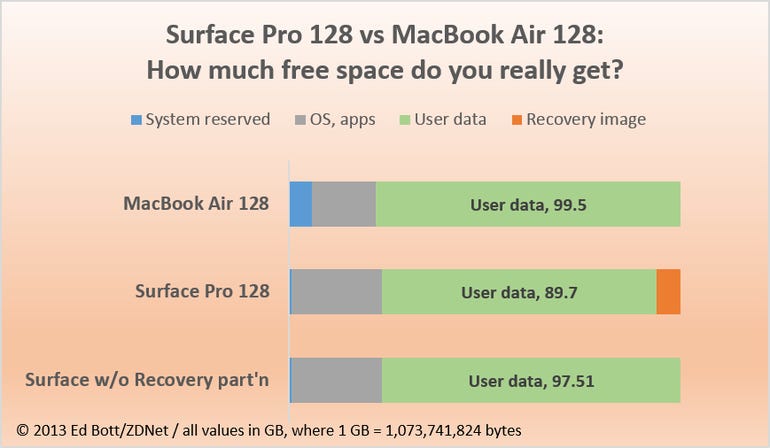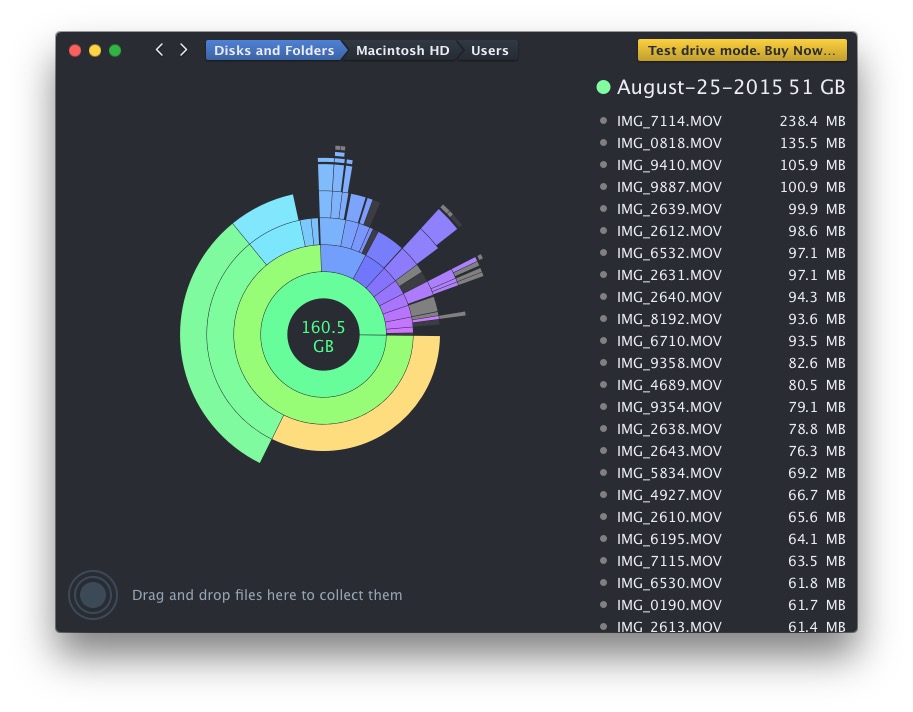How to Use Mac Spaces You can use Mac Spaces to keep your programs and windows organized in one dedicated location. Then you can use a few key moves to navigate your Mac Spaces: To view all your spaces at once, press the F8 key on your keyboard.
How to remove Spaces from Mac?
Choose Apple menu About This Mac, then click Storage. Each segment of the bar is an estimate of the storage space used by a category of files. Move your pointer over each segment for more detail. Click the Manage button to open the Storage Management window, pictured below. One of the first games I made using OpenGL and SDL. A simple tetris close with a 'Space / Sci-Fi' look and feel. Currently only Windows platform is supported I may port it to Mac OS. May 30, 2015 Click on an empty space on your Home screen to ensure that no program is selected. Make sure that Finder is displayed in the far left corner of the menu bar. Operating System: Now shows the build number under 'PRE' in the terminal, instead of 0.6. New reload program to reload the editorsheet and reset the Lua package system. Added middleclass to the OS programs globals as 'class'. WorkInProgress GUI library. Engine: GIF recorder now supports palette changing.
Space Blocks Mac Os X
What is Spaces?
Identical to Spotlight.app, Spaces (also known as Spaces.app) is a rogue adware-type application that promotes the searchbaron.com fake search engine. This application monitors web browsing activity and redirects users to searchbaron.com when they enter a search query. Spaces usually infiltrates computers without users' consent.
After successful infiltration, Spaces continually monitors browsing activity and waits for a search query to be entered. Once entered, the user is redirected to searchbaron.com. Most rogue applications that promote fake search engines modify browser options, however, this is not the case with Spaces, which does not perform any changes - it stealthily runs in the background and waits for users' actions. In addition, adware-type applications are likely to deliver intrusive advertisements and record data. Coupons, banners, pop-ups, and other similar ads usually redirect to dubious websites and can even execute scripts that download/install other unwanted applications. Therefore, even a single accidental click might result in various computer infections. Collected data (IP addresses, website URLs visited, pages viewed, search queries, etc.) often includes personal details that developers share with third parties (potentially, cyber criminals) who misuse private data to generate revenue. Therefore, having a, unwanted applications attempt to give the impression of legitimacy and trick users to install, however, these programs typically have one purpose: to generate revenue for the developers. Rather than enabling the functions promised, unwanted applications cause redirects, gather information, and deliver ads, thereby significantly diminishing the browsing experience and posing a significant threat to your privacy/computer safety.
How did Spaces install on my computer?
As mentioned above, Spaces typically infiltrates computers without users' consent, since developers proliferate these apps using intrusive advertisements, the 'bundling' method, and fake software updaters and 'cracks'. 'Bundling' is essentially stealth installation of third party programs with regular software/apps. Developers hide 'bundled' apps behind 'Custom/Advanced' settings (or other sections) of the download/installation processes. Furthermore, many users often rush these procedures and skip steps. Therefore, all 'bundled' apps are concealed behind 'Custom/Advanced' settings (or other sections) of the download/installation processes. Fake downloaders/installers infect computers by exploiting outdated software bugs/flaws or simply downloading and installing malware rather than updates. In any case, the main reasons for computer infections are poor knowledge of these threats and careless behavior.
How to avoid installation of potentially unwanted applications?

To prevent this situation, be very cautious when browsing the internet and downloading/installing/updating software. Bear in mind that intrusive advertisements usually seem legitimate. Once clicked, however, they redirect to dubious websites (gambling, pornography, adult dating, and similar). If you experience these ads/redirects, remove all suspicious applications and browser plug-ins. Never download software using third party downloaders/installers, since most are monetized using the 'bundling' method. Software should be downloaded from official sources only, preferably using direct download links. Third party downloaders/installers often include rogue apps, and thus these tools should never be used. Software should be updated using implemented functions or tools provided by the official developer. The key to computer safety is caution. If your computer is already infected with Spaces, we recommend running a scan with Combo Cleaner Antivirus for macOS to automatically eliminate this adware.
Fake error message displayed by Spaces application:
Text presented within this error:
Your computer is low on memory.
To free up some memory, please close a few applications.
IMPORTANT NOTE! As mentioned above, removing Spaces application is a complicated process, since deleting this application without first terminating its process is impossible - the process is automatically re-started immediately it is terminated. Therefore, to remove this application, you must perform the following steps:
1) Navigate to the '/Users/Test/Library/Application Support/.spaces' directory, right-click on the 'Spaces' application, and select 'Show Package Contents':
2) Navigate to the 'Contents/MacOS' directory and delete the 'Spaces' application:
3) Once the previous steps are performed, the process associated with the Spaces application will no longer be automatically re-started and you will able to terminate it easily and remove the remaining application files:
4) After removing the Spaces application, navigate to the '/Users/Test/Library/Application Support' directory and enable the display of hidden directories. Then, search for a directory with a dubious name (e.g., '.helper', '.dir' or similar), which contains an application called 'Finder'. Once located, this entire directory must be deleted. Note that MacOS actually has a genuine Finder application. Yet, the malicious one has a completely different icon (typically, a Terminal logo) and criminals simply use this name as a disguise:
Instant automatic Mac malware removal:Manual threat removal might be a lengthy and complicated process that requires advanced computer skills. Combo Cleaner is a professional automatic malware removal tool that is recommended to get rid of Mac malware. Download it by clicking the button below:
▼ DOWNLOAD Combo Cleaner for MacBy downloading any software listed on this website you agree to our Privacy Policy and Terms of Use. To use full-featured product, you have to purchase a license for Combo Cleaner. Limited three days free trial available.
Quick menu:
- STEP 1. Remove Spaces related files and folders from OSX.
- STEP 2. Remove Spaces ads from Safari.
- STEP 3. Remove Spaces adware from Google Chrome.
- STEP 4. Remove Spaces ads from Mozilla Firefox.
Video showing how to remove Spaces adware and eliminate redirects to searchbaron.com:
Spaces adware removal:
Remove Spaces-related potentially unwanted applications from your 'Applications' folder:
Click the Finder icon. In the Finder window, select 'Applications'. In the applications folder, look for 'MPlayerX','NicePlayer', or other suspicious applications and drag them to the Trash. After removing the potentially unwanted application(s) that cause online ads, scan your Mac for any remaining unwanted components.
Combo Cleaner checks if your computer is infected with malware. To use full-featured product, you have to purchase a license for Combo Cleaner. Limited three days free trial available.
Remove spaces adware related files and folders:
Click the Finder icon, from the menu bar. Choose Go, and click Go to Folder...
Check for adware-generated files in the /Library/LaunchAgents folder:
In the Go to Folder... bar, type: /Library/LaunchAgents
In the “LaunchAgents” folder, look for any recently-added suspicious files and move them to the Trash. Examples of files generated by adware - “installmac.AppRemoval.plist”, “myppes.download.plist”, “mykotlerino.ltvbit.plist”, “kuklorest.update.plist”, etc. Adware commonly installs several files with the same string.

Check for adware generated files in the /Library/Application Support folder:
In the Go to Folder... bar, type: /Library/Application Support
In the “Application Support” folder, look for any recently-added suspicious folders. For example, “MplayerX” or “NicePlayer”, and move these folders to the Trash.
Check for adware-generated files in the ~/Library/LaunchAgents folder:
Space Blocks Mac Os Download
In the Go to Folder bar, type: ~/Library/LaunchAgents
In the “LaunchAgents” folder, look for any recently-added suspicious files and move them to the Trash. Examples of files generated by adware - “installmac.AppRemoval.plist”, “myppes.download.plist”, “mykotlerino.ltvbit.plist”, “kuklorest.update.plist”, etc. Adware commonly installs several files with the same string.
Check for adware-generated files in the /Library/LaunchDaemons folder:
In the Go to Folder... bar, type: /Library/LaunchDaemons
In the “LaunchDaemons” folder, look for recently-added suspicious files. For example “com.aoudad.net-preferences.plist”, “com.myppes.net-preferences.plist”, 'com.kuklorest.net-preferences.plist”, “com.avickUpd.plist”, etc., and move them to the Trash.
Scan your Mac with Combo Cleaner:
If you have followed all the steps in the correct order you Mac should be clean of infections. To be sure your system is not infected run a scan with Combo Cleaner Antivirus. Download it HERE. After downloading the file double click combocleaner.dmg installer, in the opened window drag and drop Combo Cleaner icon on top of the Applications icon. Now open your launchpad and click on the Combo Cleaner icon. Wait until Combo Cleaner updates it's virus definition database and click 'Start Combo Scan' button.
Space Blocks Mac Os X
Combo Cleaner will scan your Mac for malware infections. If the antivirus scan displays 'no threats found' - this means that you can continue with the removal guide, otherwise it's recommended to remove any found infections before continuing.
After removing files and folders generated by the adware, continue to remove rogue extensions from your Internet browsers.
Spaces adware removal from Internet browsers:
Remove malicious extensions from Safari:
Remove spaces adware related Safari extensions:
Open Safari browser, from the menu bar, select 'Safari' and click 'Preferences...'.
In the preferences window, select 'Extensions' and look for any recently-installed suspicious extensions. When located, click the 'Uninstall' button next to it/them. Note that you can safely uninstall all extensions from your Safari browser - none are crucial for normal browser operation.
- If you continue to have problems with browser redirects and unwanted advertisements - Reset Safari.
Remove malicious plug-ins from Mozilla Firefox:
Remove spaces adware related Mozilla Firefox add-ons:
Open your Mozilla Firefox browser. At the top right corner of the screen, click the 'Open Menu' (three horizontal lines) button. From the opened menu, choose 'Add-ons'.
Choose the 'Extensions' tab and look for any recently-installed suspicious add-ons. When located, click the 'Remove' button next to it/them. Note that you can safely uninstall all extensions from your Mozilla Firefox browser - none are crucial for normal browser operation.
- If you continue to have problems with browser redirects and unwanted advertisements - Reset Mozilla Firefox.
Remove malicious extensions from Google Chrome:
Remove spaces adware related Google Chrome add-ons:
Open Google Chrome and click the 'Chrome menu' (three horizontal lines) button located in the top-right corner of the browser window. From the drop-down menu, choose 'More Tools' and select 'Extensions'.
In the 'Extensions' window, look for any recently-installed suspicious add-ons. When located, click the 'Trash' button next to it/them. Note that you can safely uninstall all extensions from your Google Chrome browser - none are crucial for normal browser operation.
- If you continue to have problems with browser redirects and unwanted advertisements - Reset Google Chrome.